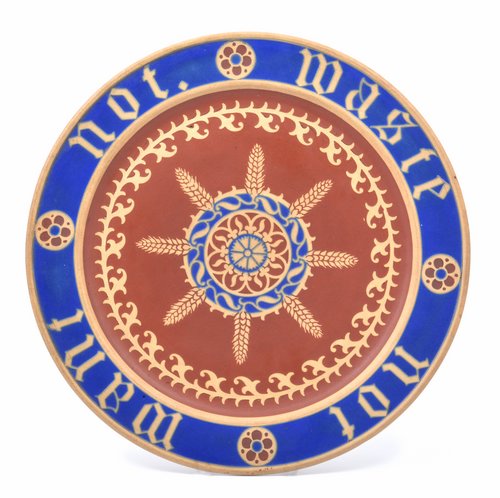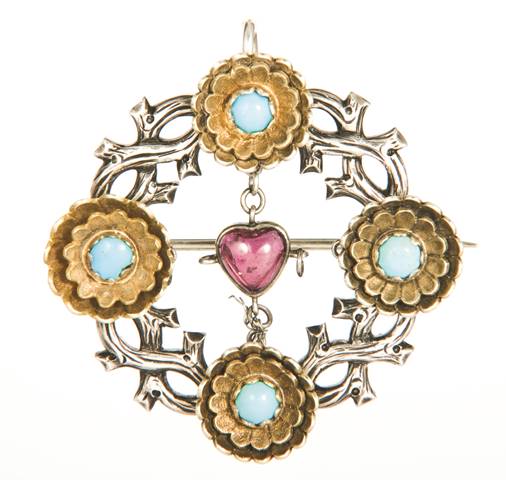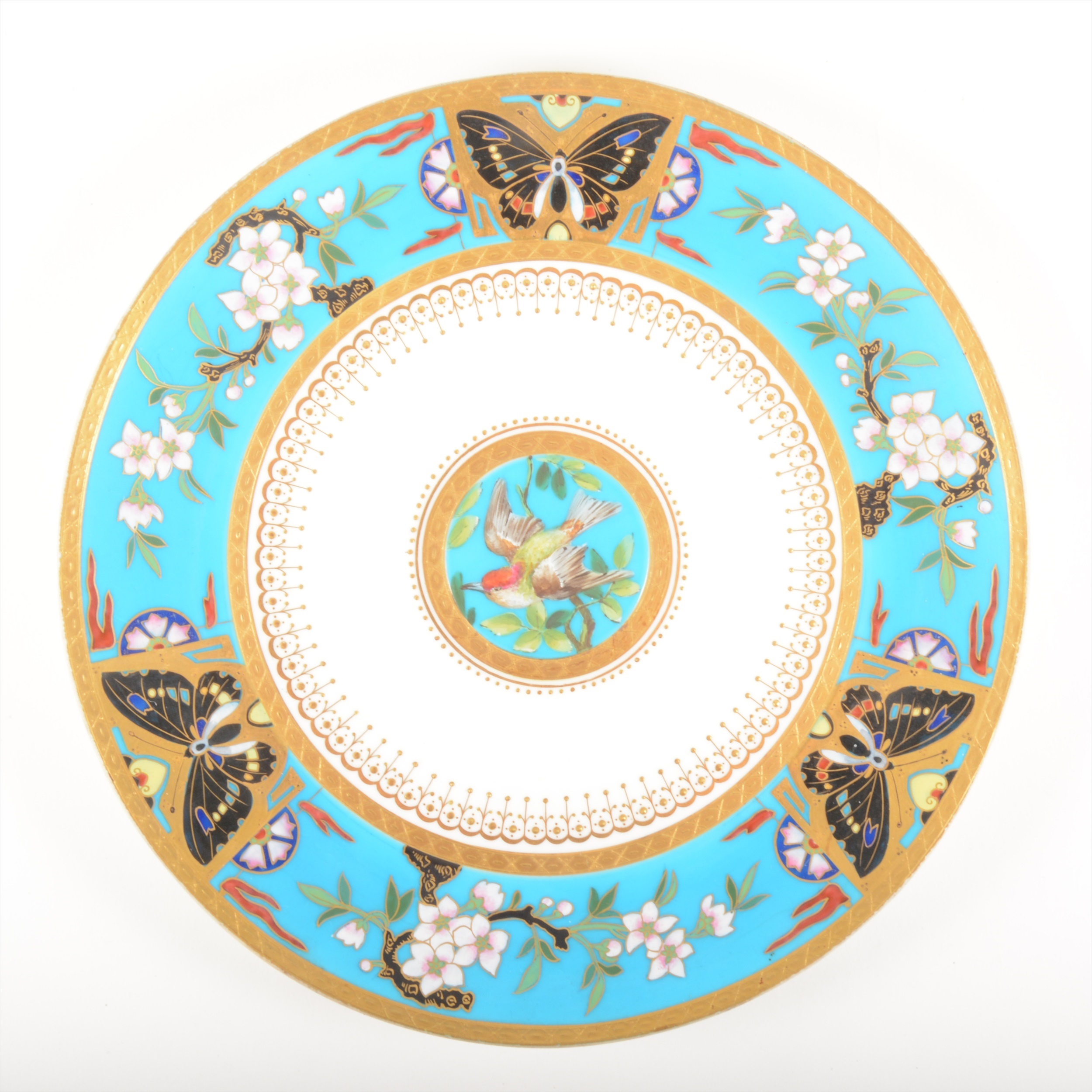

The Gothic Revival movement dominated the 19th century and has almost become synonymous with the 'look' of Victorian Britain. We need only look to some of the most iconic architectural landmarks to see its legacy – such as the Palace of Westminster, The Grand Hotel at St Pancras, as well as countless other religious, civic and domestic buildings. The leading architects of the day, who were reviving the majesty of continental Europe’s great Gothic ages, also applied their eye and training to the decorative art mediums. We therefore have been left with a vast legacy of objects and art that is still prevalent in our homes today. Some of the key characteristics you might expect to see would be Gothic arches or tracery designs incorporated as ornament to furniture or ceramics; a definitive Gothic script used for Latin mottos or monograms; Medieval figures painted in glorious clothing on anything from paintings to furniture and ceramic tiles; and heraldic motifs aplenty.
Some of the key designers of the movement include the following:
Pugin was a prolific architect, designer, and critic who played a significant part in shaping the Victorian Gothic Revival through his writings on form and architecture. He had close links with some of the leading manufacturers of the day, including the Hardman metalworks in Birmingham, John Gregory Crace producing furniture, and the Minton pottery works in Stoke on Trent for ceramics. These powerhouses of production, working to Pugin’s designs, produced some stunning decorative masterpieces.
A prominent Scottish exponent of the Gothic Revival style, Bruce Talbert’s designs principally extend to furniture. He moved to London and produced designs for Holland & Sons in the mid-1860s, as well as Gillows of Lancaster. His hand also turned to metalwork, tiles, stained glass, and textiles.

Burges was another key Victorian art-architect who applied his eye to a manner of different mediums. His most famous buildings and interiors were by commission of the Marquess of Bute, for whom he remodelled Cardiff Castle, and reconstructed Castell Coch. The interiors of both of these two now public landmarks show off Burges’s artistic talent at his very best. He designed furniture, stained glass, metalwork, and even jewellery, such as the bridesmaids’ brooches for his close friend and fellow architect-designer John Pollard Seddon, as seen here. An example of this brooch was discovered locally, and realised £27,000 at auction.

Born in the mid-19th century, the Aesthetic Movement championed the “Art for Art’s sake” belief. A movement that spanned all forms of the Arts, when applied to the decorative arts it has become synonymous with ebonised wood with gilt detailing; a strong influence of Eastern art, especially Japanese art; a heavy use of natural forms and motifs; and Peacock feather colouring and motifs. There is one name that stands above most others in this field…
Christopher Dresser was highly prolific, and like his Gothic contemporary Pugin, he executed designs across all mediums of the decorative arts. His designs are often extremely avant-garde, with some of his more daring designs in metal work now held in such high regard they are considered ‘iconic’. One of his more important private commissions was for the refurbishment of Bushloe House in Wigston, Leicester. He designed and installed stained glass, fireplaces, and stairwells into the permanent fixtures, alongside elaborate furniture designs throughout. He held close associations throughout his career with leading art potteries of the day, such as Minton and the Linthorpe Pottery, as well as the John Couper & Sons glassworks in Scotland, who produced his ‘Clutha’ series. To this day, Dresser’s designs are still revered and highly prised when presented on the open market.

If you have an item that you feel falls under these movements that you would like valued for auction it couldn’t be easier. You can submit an enquiry via our Valuations Form where you can upload images and details of your items.
From these images our Specialist will be able to give an initial guide into likely auction value. You can share multiple files by emailing our Specialist directly, or alternatively book an appointment to see us in person.
As with any valuation, certain factors will be crucial in determining a more accurate and realistic auction estimate. The condition of an item is especially important to dedicated collectors in this field. Not until our Specialist has seen an item in person would the final auction advice be agreed.
